C.P. Lesley's Blog, page 39
October 7, 2016
The No-Longer-Dreaded Synopsis
Or How I Learned to Love What I Once Feared
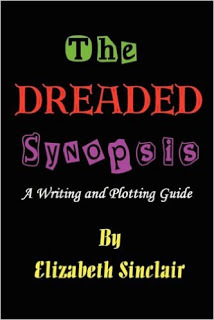
As Elizabeth Sinclair notes in her how-to guide—the title of which, The Dreaded Synopsis, I have shamelessly adapted for this post—“Given a choice between writing one book and a synopsis and writing two books, most authors would choose to write two books. Even the word ‘synopsis’ inspires cold chills and neuroses in novelists” (5).
Too, too true. I can attest from experience that Sinclair has hit the proverbial nail smartly on its head here. Throughout my first three books, I loathed synopses. For the next three, I didn’t bother to write them. The great advantage of forming a writers’ cooperative, I told myself, was that I would never, ever have to write a synopsis again. And almost every writer I know would raise a mammoth cheer at that thought.
Why is that? What makes people who can spend years in a room chronicling the adventures of characters who live only in their heads and write multiple drafts of 100,000-word novels cringe at the thought of summarizing their stories in a single page—or even five pages? The terrors of a back-cover blurb (although I’ve learned to love those too) are easier to understand: a blurb is a marketing tool, so it has to reflect the book in ways both interesting and appealing, giving away just enough to catch a potential reader’s attention and make him or her pick up the book, but not so much that the urge to find out more fades away.
Of course, synopses act as marketing tools, too. Literary agents want them, as do publishing house editors. So much better to read a page than fifty pages, or even ten, especially when one faces hundreds—even thousands—of queries. And although a poorly written synopsis may not do justice to the novel it portrays, a well-written one almost always indicates an author who has mastered her craft. With only so many hours in the day, agents and editors can be forgiven for taking the risk of overlooking a few good authors to the benefit of others who have mastered this essential technique.
None of that, however, explains why I decided to write a synopsis for The Vermilion Bird. My reason may help you, too, over your dread of synopses (and I assume that if you have read this far, you like them no more than I once did). Quite simply, I realized I could use it to focus my thoughts and sketch out the central events of both the plot and—most essential—the character development of the novel. The plot relies in part on a particular political crisis that afflicted Russia in 1537 and followed a compressed but vital timeline. The crisis serves as background, of course; Vermilion Bird is historical fiction, not history. Still, the events drive the story, and I needed a clear sense of when characters needed to arrive and leave specific places and what openings existed between events when fictional development could take place.
For that, a timeline would suffice, and I have been constructing one in Aeon Timeline 2, a wonderfully useful little program that lets me track where various characters (including actual historical figures) are at given moments in time. But precisely because the fiction element ultimately dominates, the synopsis proved its worth. There the focus falls (at least, it should fall—a realization that opens the whole process up and makes it less overwhelming) on the characters: who the main players are and what they want; what brings them together and pushes them apart; which problems they need to solve before they can achieve their conscious and unconscious goals; and who has to interact with whom when for the whole unwieldy structure to cohere instead of fall apart.
As that information goes onto the page, flaws and strengths become clear. So do plot holes and weak motivations. The imagination kicks in, and the effect on the author is the same as writing every day: the characters come alive and start talking. In a page or two, a writer has room only for the things that matter. Finding those things before getting a long way into the book saves an enormous amount of time that must otherwise go into revision. The synopsis also requires an endpoint, which then provides a beacon in the midpoint of the book when, as generally happens in my case, the characters have pushed the story in directions I never anticipated and I need to rein them in and get them back on track. Redoing the synopsis after completing the first draft clarifies what needs cutting and where to expand. For all these reasons, it makes sense to learn how to write a synopsis, even if you never plan to show it to an agent or an editor.
If you have not read Sinclair’s book, I highly recommend it. It’s available in print and for Kindle, and it lays out the mechanics in clear, vivid prose, with great examples to get you over that hump. For me, it turned synopsis writing from a chore to a guilty pleasure, and what could be better than that?
To close, I offer not the full one-page synopsis for Vermilion Bird (too much information so early in the process!) but the back-cover blurb, an even more condensed version of my story-in-the-making. No doubt that will change, too, but the basic idea will remain. After all, I know now where the story is heading....
The Vermilion Bird (Legends of the Five Directions 4: South)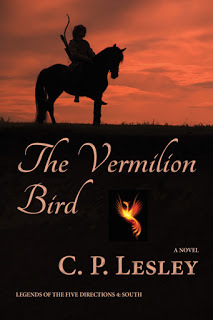
Maria Koshkina has spent most of the last three years wishing herself out of her in-laws’ household. So she should feel relieved now that her father has found a new match for her. Alas, he has picked the most annoying man in creation—not even a Russian, but a Tatar sultan who takes it for granted that she will ride at his side, read what he gives her, and advise him on the ins and outs of the Moscow court. And where her first husband had minimal interest in women—or at least in Maria—the new one has a healthy respect for the joys of marriage and no qualms whatsoever about seeking them outside it.
Her husband can’t decide quite what to make of this beautiful redhead who seems both untouched and touchy. Doesn’t she understand that a princess needs more than embroidery to survive? In the assassination-filled politics of the sixteenth-century Russian court, this unlikely pair struggles to find a way to get along before the undercurrents of rebellion sweep them away.

As Elizabeth Sinclair notes in her how-to guide—the title of which, The Dreaded Synopsis, I have shamelessly adapted for this post—“Given a choice between writing one book and a synopsis and writing two books, most authors would choose to write two books. Even the word ‘synopsis’ inspires cold chills and neuroses in novelists” (5).
Too, too true. I can attest from experience that Sinclair has hit the proverbial nail smartly on its head here. Throughout my first three books, I loathed synopses. For the next three, I didn’t bother to write them. The great advantage of forming a writers’ cooperative, I told myself, was that I would never, ever have to write a synopsis again. And almost every writer I know would raise a mammoth cheer at that thought.
Why is that? What makes people who can spend years in a room chronicling the adventures of characters who live only in their heads and write multiple drafts of 100,000-word novels cringe at the thought of summarizing their stories in a single page—or even five pages? The terrors of a back-cover blurb (although I’ve learned to love those too) are easier to understand: a blurb is a marketing tool, so it has to reflect the book in ways both interesting and appealing, giving away just enough to catch a potential reader’s attention and make him or her pick up the book, but not so much that the urge to find out more fades away.
Of course, synopses act as marketing tools, too. Literary agents want them, as do publishing house editors. So much better to read a page than fifty pages, or even ten, especially when one faces hundreds—even thousands—of queries. And although a poorly written synopsis may not do justice to the novel it portrays, a well-written one almost always indicates an author who has mastered her craft. With only so many hours in the day, agents and editors can be forgiven for taking the risk of overlooking a few good authors to the benefit of others who have mastered this essential technique.
None of that, however, explains why I decided to write a synopsis for The Vermilion Bird. My reason may help you, too, over your dread of synopses (and I assume that if you have read this far, you like them no more than I once did). Quite simply, I realized I could use it to focus my thoughts and sketch out the central events of both the plot and—most essential—the character development of the novel. The plot relies in part on a particular political crisis that afflicted Russia in 1537 and followed a compressed but vital timeline. The crisis serves as background, of course; Vermilion Bird is historical fiction, not history. Still, the events drive the story, and I needed a clear sense of when characters needed to arrive and leave specific places and what openings existed between events when fictional development could take place.
For that, a timeline would suffice, and I have been constructing one in Aeon Timeline 2, a wonderfully useful little program that lets me track where various characters (including actual historical figures) are at given moments in time. But precisely because the fiction element ultimately dominates, the synopsis proved its worth. There the focus falls (at least, it should fall—a realization that opens the whole process up and makes it less overwhelming) on the characters: who the main players are and what they want; what brings them together and pushes them apart; which problems they need to solve before they can achieve their conscious and unconscious goals; and who has to interact with whom when for the whole unwieldy structure to cohere instead of fall apart.
As that information goes onto the page, flaws and strengths become clear. So do plot holes and weak motivations. The imagination kicks in, and the effect on the author is the same as writing every day: the characters come alive and start talking. In a page or two, a writer has room only for the things that matter. Finding those things before getting a long way into the book saves an enormous amount of time that must otherwise go into revision. The synopsis also requires an endpoint, which then provides a beacon in the midpoint of the book when, as generally happens in my case, the characters have pushed the story in directions I never anticipated and I need to rein them in and get them back on track. Redoing the synopsis after completing the first draft clarifies what needs cutting and where to expand. For all these reasons, it makes sense to learn how to write a synopsis, even if you never plan to show it to an agent or an editor.
If you have not read Sinclair’s book, I highly recommend it. It’s available in print and for Kindle, and it lays out the mechanics in clear, vivid prose, with great examples to get you over that hump. For me, it turned synopsis writing from a chore to a guilty pleasure, and what could be better than that?
To close, I offer not the full one-page synopsis for Vermilion Bird (too much information so early in the process!) but the back-cover blurb, an even more condensed version of my story-in-the-making. No doubt that will change, too, but the basic idea will remain. After all, I know now where the story is heading....
The Vermilion Bird (Legends of the Five Directions 4: South)

Maria Koshkina has spent most of the last three years wishing herself out of her in-laws’ household. So she should feel relieved now that her father has found a new match for her. Alas, he has picked the most annoying man in creation—not even a Russian, but a Tatar sultan who takes it for granted that she will ride at his side, read what he gives her, and advise him on the ins and outs of the Moscow court. And where her first husband had minimal interest in women—or at least in Maria—the new one has a healthy respect for the joys of marriage and no qualms whatsoever about seeking them outside it.
Her husband can’t decide quite what to make of this beautiful redhead who seems both untouched and touchy. Doesn’t she understand that a princess needs more than embroidery to survive? In the assassination-filled politics of the sixteenth-century Russian court, this unlikely pair struggles to find a way to get along before the undercurrents of rebellion sweep them away.
Published on October 07, 2016 06:00
September 30, 2016
Jazz, Jukes, and Gin
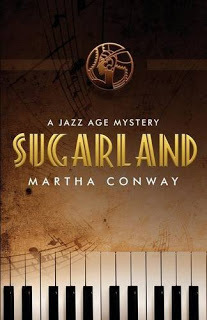 I love a good mystery, and a good mystery set in the past is even better. So I was delighted to encounter Sugarland, the latest novel by Martha Conway (after 12 Bliss Street and Thieving Forest, both of which we discuss, if not at length), in preparation for my latest New Books in Historical Fiction interview. As you can see from the description below, Sugarland takes place in Chicago right after the Great War—a city still racially and economically segregated despite the influx of Southerners fleeing the influence of Jim Crow laws. In this land of liquor, nightclubs, and crime, a complicated scheme begins to unravel, a young man dies, and two women whose paths might otherwise never cross must work together to figure out what’s happening in time to save themselves and those they love. It’s a wonderfully rich story, and Conway is an engaging speaker, so give it a listen—then read her book. It’s definitely a hidden gem.
I love a good mystery, and a good mystery set in the past is even better. So I was delighted to encounter Sugarland, the latest novel by Martha Conway (after 12 Bliss Street and Thieving Forest, both of which we discuss, if not at length), in preparation for my latest New Books in Historical Fiction interview. As you can see from the description below, Sugarland takes place in Chicago right after the Great War—a city still racially and economically segregated despite the influx of Southerners fleeing the influence of Jim Crow laws. In this land of liquor, nightclubs, and crime, a complicated scheme begins to unravel, a young man dies, and two women whose paths might otherwise never cross must work together to figure out what’s happening in time to save themselves and those they love. It’s a wonderfully rich story, and Conway is an engaging speaker, so give it a listen—then read her book. It’s definitely a hidden gem.As ever, the rest of this post comes from New Books in Historical Fiction.
It’s 1921, and Prohibition is in full swing, but you wouldn’t know it from the nightclubs and speakeasies of Chicago, where bathtub gin mingles with homemade bourbon distilled from trainloads of corn sugar shipped from Southern farms. A young man named Al Capone is on his way up, the bar owners squabble over control of the sugar trade, and the police know to turn a blind eye. So when a drive-by shooting ends in murder, two young women—Eve, a black jazz pianist, and Lena, a white nurse—band together to find Eve’s missing stepsister and the killer of Lena’s brother in Sugarland (Noontime Books, 2016)—a fast-paced, twisty, riveting journey through the seedy back alleys of the Windy City, where the Great Migration has only just begun to break down the barriers of racial segregation. Out of these disparate elements Martha Conway—the winner of numerous awards for her previous historical novel, Thieving Forest—blends a scintillating cocktail set to the thumping rhythms of jazz, directed by a mysterious kingpin known only as the Walnut.
Published on September 30, 2016 12:23
September 23, 2016
Careful What You Wish For
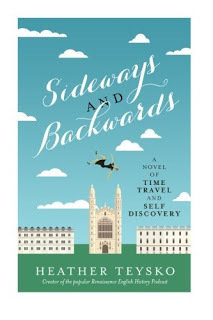 If people always made wise choices, the role of fiction in the world would be much diminished. As readers, I doubt we consciously seek out stories where the heroes and heroines plunge their lives into disaster within the first twenty pages—or we may not like to admit that to ourselves—but unconsciously we do. One of the first lessons a new writer has to master is the art of forcing beloved characters (often based on the author, in a first novel) to suffer. In early drafts authors often create idealized versions of themselves—lovely to imagine and fun to write but, alas, deadly boring to readers. The rest of us flawed, struggling humans just can’t connect to perfect people living perfect lives. So as writers we learn to complicate, complicate, complicate until that final moment of resolution that allows the book to end. As one of the developers of the fiction-planning software Dramatica put it, “A story represents the mind’s way of solving a problem” (or words to that effect—alas, my memory is not that good!). As I interpret that phrase, fiction allows us, from the safety of our couches, to explore the many different avenues available to resolve any given situation. Hence characters require problems to solve.
If people always made wise choices, the role of fiction in the world would be much diminished. As readers, I doubt we consciously seek out stories where the heroes and heroines plunge their lives into disaster within the first twenty pages—or we may not like to admit that to ourselves—but unconsciously we do. One of the first lessons a new writer has to master is the art of forcing beloved characters (often based on the author, in a first novel) to suffer. In early drafts authors often create idealized versions of themselves—lovely to imagine and fun to write but, alas, deadly boring to readers. The rest of us flawed, struggling humans just can’t connect to perfect people living perfect lives. So as writers we learn to complicate, complicate, complicate until that final moment of resolution that allows the book to end. As one of the developers of the fiction-planning software Dramatica put it, “A story represents the mind’s way of solving a problem” (or words to that effect—alas, my memory is not that good!). As I interpret that phrase, fiction allows us, from the safety of our couches, to explore the many different avenues available to resolve any given situation. Hence characters require problems to solve.With this idea at the back of my mind, I knew I was in for a fun time when I opened Heather Teysko’s debut novel, Sideways and Backwards , and encountered the first chapter title: “In Which Things Fall Apart.” Nothing like laying it out there from the beginning.
In fact, for Natasha, the heroine, things have already fallen apart. She just hasn’t realized it yet. As the opening paragraph puts it, after settling us into a misty fall morning underneath a cosy duvet:
Today, though, there is a huge clash going on. An epic battle between the dreamworld in which I was living not five minutes ago, filled with warmth and quiet, and the incessant beeping of my phone. Someone clearly wants to tell me something, and I can’t decide whether it’s worth it to make the effort required to reach it, charging on my night table, which requires movement.
Turns out that Natasha has imbibed rather too freely at a Halloween party, and after a few dozen more phone-based interruptions, she learns to her horror that her “friends” have plastered her transgressions all over social media—imperiling her career as editor in chief to a London publishing house. She flees to Cambridge, seeking some quiet time at its ancient university while her publicist cleans up the mess. But during Evensong in the King’s College chapel, Natasha blacks out. She wakes up five hundred years in the past, with no idea how she got there, never mind how to get home. “Quiet time” and “refuge” have just taken on a whole new meaning.
The story is tremendous fun, and although not quite able to break her addiction to her iPhone (sustained by a conveniently packed solar charger), Natasha does use her isolation from the Internet to engage in necessary emotional work as the story progresses. A neat twist ties beginning and end together in a surprising way, and the explanation for her journey to the past has a lovely medieval resonance. So if you like funny, time-traveling chick lit—imagine Bridget Jones coping with Tudor England—Sideways and Backwards is well worth a few evenings of your time. You may never find yourself in sixteenth-century England, but faux pas on social media are a threat to us all.
Heather Teysko is not only an author; she also hosts interviews of her own. Listen to her chat with historians and historical novelists on the Renaissance English History Podcast. Natasha has her own webpage, where you can find out more about her story and listen to the piece of music that she hears in the King’s College Chapel with such extraordinary results. Or you can just check Heather’s site for information about her and links to the others.
And by the way, love that cover. It’s a perfect match for both the subject of its book and the tone.
Published on September 23, 2016 07:38
September 16, 2016
Feeding the Crowds
 When Shelley Workinger wrote to ask if I’d be interested in riffing about food in my novels, I thought it was a great idea. Food is a crucial part of life—culture, history, family—so it plays an important role in my books, as it does in most fiction. How better to illustrate alienation and homesickness than by having a character yearn for spices in a dining room filled with the odor of overcooked cabbage? How better to show cultural difference than introducing a bowl of lemons that some characters take for granted while others stare in awe or confusion? I was warming up my typing fingers within minutes, ready to show those lemons lighting up the room with their bright yellow zest and perfuming the air.
When Shelley Workinger wrote to ask if I’d be interested in riffing about food in my novels, I thought it was a great idea. Food is a crucial part of life—culture, history, family—so it plays an important role in my books, as it does in most fiction. How better to illustrate alienation and homesickness than by having a character yearn for spices in a dining room filled with the odor of overcooked cabbage? How better to show cultural difference than introducing a bowl of lemons that some characters take for granted while others stare in awe or confusion? I was warming up my typing fingers within minutes, ready to show those lemons lighting up the room with their bright yellow zest and perfuming the air.Then Shelley told me she wanted to feature Kingdom of the Shades . Now I love all my novels, like any proud “mother,” and Kingdom has a special resonance for me. Still, it does star a ballerina—and ballerinas aren’t exactly known for their devotion to food. At first crack, I couldn’t think of a single food-related scene, other than a moment when Choli, the young girl whose curiosity kicks off the series, finds herself wrestling with a machine’s idea of hot peppers (homesickness, again). “Don’t you want me to write about the Russian novels instead?” I pleaded. “Lots of food there.”
No. Kingdom was a better fit for the blog as a whole. I could use the issue of food as a springboard, she said, to discuss the characters and the series. Okay. I love a challenge, but I had to scratch my head about this one for a while. I could start with not eating, I supposed, or fudge a bit and dip into Desert Flower , the first Tarkei Chronicle, for live spaghetti and dinner-plate-sized donuts.
Then I opened the book—Kingdom of the Shades, that is—and the first thing that caught my eye was chapter 3. It begins:
The soup glowed virulently orange in the murky light that crept through the restaurant windows. Danion, [hero] regarding the dish with controlled distaste, vacillated between a scientist’s curiosity and simple disgust. Where was his Pannthu friend, Thuja, when he needed her? He had watched her eat even more revolting concoctions than this.
 In his efforts to avoid eating this abominable dish (which his protegé eagerly devours, proclaiming it “just like Mama used to make”), Danion triggers a series of events that pitchfork him onto what he first believes to be Memory Lane. In fact—because this is a novel—he is facing a call to action that will drag him off on an emotional journey and drop him into a moral quandary that requires 300+ pages to sort out.
In his efforts to avoid eating this abominable dish (which his protegé eagerly devours, proclaiming it “just like Mama used to make”), Danion triggers a series of events that pitchfork him onto what he first believes to be Memory Lane. In fact—because this is a novel—he is facing a call to action that will drag him off on an emotional journey and drop him into a moral quandary that requires 300+ pages to sort out.As I explored further, I found food popping up in the most unexpected places. As I stumbled over each new scene, I recalled writing it, of course. But what had stuck with me (and this is my book!) were the characters, the plot, the theme. The food blends into the backdrop, where it nestles among costumes and settings. Yet in its own way, it plays a crucial part in creating my story world, just as it does in my other, more obviously food-laden novels.
And in fact, my ballerina—Alessandra Sinclair, better known as Sasha—is not an anorexic cliché. She is slender but strong, and she has enough sense to know that even exercise can’t build powerful muscles in the absence of nutritious meals. The body will cannibalize itself for nutrients if you don’t supply the right ones on the right schedule. That’s why twenty-something dancers sometimes die of heart attacks. Sasha doesn’t indulge (most of the time), but she doesn’t count every calorie either. And that attitude reveals something about her essential self.
For the full post, see Shelley Workinger’s blog, “But What Are They Eating?” For more fun posts on food and its historical/cultural contexts, see “Medieval Blancmange and the Modern Classroom” and “Eat Your Primary Sources! Or, Teaching the Taste of History” the latest posts at the Recipes Project blog. (Who can resist titles like those?) And if you enjoy my Legends series, don’t miss the contributions on Russian Recipes, published by the Recipes Project in July 2014—especially “What to Feed the Servants in Sixteenth-Century Russia,” which examines the Domostroi —where, in fact, many of the dishes in my series originate.
And for an interview not related to food by one of my fellow-authors at Five Directions Press, check out what Gabrielle Mathieu, author of The Falcon Flies Alone , has to say to Eleanor Parker Sapia on The Writing Life blog. I’ll be featured there, too, next month.
And last but—as they say—not least, don’t miss our monthly “Books We Loved” post over at Five Directions Press. As fall closes in and the evenings get longer and colder, a cup of hot cocoa and a good book look better and better!
Images from Clipart: dancers at the barre no. 32254285; soup (enhanced in Photoshop) no. 30717342.
Published on September 16, 2016 06:00
September 9, 2016
The Power of Song
 Writers have many ways to create characters. We imagine the past experiences and conflicts (backstory) that gave our invented people specific responses to the world. We assign goals, both practical and emotional, then imagine the beliefs that inspire those goals and the obstacles that prevent the character from attaining them. Even minor characters need clear objectives if they are to play a part in the larger narrative. Much of this preparation remains—or ought to remain—invisible to the reader, but without it, what should be a richly populated story world becomes no more than a tale of cardboard cutouts moving implausibly along ill-defined paths. The resulting book is, as writers say, “flat.” Readers just toss it aside as uninteresting.
Writers have many ways to create characters. We imagine the past experiences and conflicts (backstory) that gave our invented people specific responses to the world. We assign goals, both practical and emotional, then imagine the beliefs that inspire those goals and the obstacles that prevent the character from attaining them. Even minor characters need clear objectives if they are to play a part in the larger narrative. Much of this preparation remains—or ought to remain—invisible to the reader, but without it, what should be a richly populated story world becomes no more than a tale of cardboard cutouts moving implausibly along ill-defined paths. The resulting book is, as writers say, “flat.” Readers just toss it aside as uninteresting.One powerful means of individualizing a character focuses on that character’s interests. Painters experience the world differently from dancers, athletes from musicians. A fashion designer notices clothes; a scholar may listen for new and provocative ideas. A physician instinctively assesses the bodies of others for signs of health, malnutrition, or disease. Most people have more than one interest, allowing a thoughtful author to combine these varying approaches to create distinct, well-rounded people. Time period, setting, culture all add to the mix.
In the case of Tasa’s Song, the subject of my latest New Books in Historical Fiction interview with Linda Kass, the heroine studies the violin. Indeed, she is something of a prodigy. Her instrument appears on the cover and is implied in the title—although Tasa’s song includes more than music. Right in the opening scene, we learn that the violin is her most precious possession and understand how terrified she must be to hear that the Nazis are almost on her doorstep when she almost leaves it behind. Throughout the book, pieces of music enter her head as she faces incidents both joyful and dreadful: Tchaikovsky’s Souvenir d’un lieu cher (Memory of a Beloved Place) as she flees the SS; Peter and the Wolf as she lies in hiding while soldiers walk back and forth over her head; Sarasate’s Gypsy Airs in a moment of triumph. When Shostakovich replaces Chopin, we know both that the Soviets have taken over her school and how she feels about their occupation. The arrival of Vivaldi’s Four Seasons indicates a quite different state of mind.
It’s all very well done, and the author and I discuss the topic at some length in the interview. So give it a listen. As always, the podcasts are free, although there are suggestions on the website for ways in which you can support the New Books Network. And check back in a few weeks for another, very different musical discussion when I interview Martha Conway about her latest novel, Sugarland , set in Jazz Age Chicago. Kirkus Reviews calls it “an absorbing whodunit full of gangsters and glitz,” but the heroine is a pianist in a band, so there has to be a little jazz in there somewhere.
As always, the rest of this post comes from New Books in Historical Fiction.
Although the Holocaust inflicted extreme brutality wherever it occurred, the specific events associated with the violence differed from one place to another. In Tasa’s Song (She Writes Press, 2016), Linda Kass weaves stories of her own mother’s life in eastern Poland under Soviet and Nazi occupation to create a universal story of suffering and survival.
Tasa Rosinski is a violinist, a child prodigy living in the Polish village of Podkamien, when Adolf Hitler is elected chancellor of Germany in 1933. At ten, her world revolves around school, music, and play—secure amid a loving family, friendly neighbors, and a teasing older cousin who has become her best friend. But as Tasa matures into adolescence and moves to the nearby town of Brody for schooling, the influence of antisemitism on her native Poland grows steadily. Life becomes increasingly unsafe for a Jewish girl, however gifted.
In 1939, just before the outbreak of war, the signing of the Molotov-Ribbentrop Pact transfers Tasa’s region to Soviet control. The USSR invades: demands for socialist realism eliminate the study of Polish literature, Marxist-Leninist ideology replaces religion, and students with questionable political connections disappear from the school. The Soviets deport several of Tasa’s relatives to Siberia. Yet Tasa and those close to her will soon recast their oppressors as liberators. Because in June 1941, Hitler orders his forces to attack the USSR, turning Tasa’s home into a battleground.
Published on September 09, 2016 06:00
September 2, 2016
Internet Radio by the Numbers
 People—prospective guests and their publicists in particular—often ask me how many listeners their podcast interview will reach. It’s a logical question, and I wish I had a clear answer to give them. I don’t, for the simple reason that I don’t administer the New Books Network (NBN) and therefore have no access to its statistics other than the intermittent messages sent around by the founder and editor in chief, Marshall Poe. Most of those relate to the network as a whole, not to individual channels.
People—prospective guests and their publicists in particular—often ask me how many listeners their podcast interview will reach. It’s a logical question, and I wish I had a clear answer to give them. I don’t, for the simple reason that I don’t administer the New Books Network (NBN) and therefore have no access to its statistics other than the intermittent messages sent around by the founder and editor in chief, Marshall Poe. Most of those relate to the network as a whole, not to individual channels.What I do know is that the growth in listeners is steady and ongoing. In January 2015, five years after inception, the NBN posted its 2,000th interview; since then it has added 60 podcasts a month, for a current total of 3,200 episodes split among about 80 channels with twice that many hosts. These days, we get about 20,000 downloads a day, double the number at this time last year (and that followed an unexpected jump in August 2015). If even a hundredth of those are for New Books in Historical Fiction, then we are polling in the neighborhood of 6,000 downloads a month or more than 70,000 a year. Comparable numbers for the NBN as a whole would be 600,000 downloads a month and 7.2 million for the year.
Not all of these are unique users: that is, 7.2 million downloads doesn’t translate to 7.2 million listeners. But after almost four years of chatting with fellow historical novelists about their books, it’s encouraging to know that somewhere out there, people are listening. And if you haven’t joined them yet, why not give it a shot? The podcasts are free; we have a brand-new website; and here’s a chance to find out more about your favorite authors—or just new books to read. My next interview—with Linda Kass about her lyrical debut novel, Tasa’s Song—should go live in the next few days. More about that next week.
While you’re there, don’t forget to like us on Facebook and follow us on Twitter. Follow me, too (Facebook, Twitter, Google Plus). That way, you’ll always hear when new episodes go live.
Microphone © Clipart.com, #1658905
Published on September 02, 2016 09:59
August 26, 2016
History in Present Tense
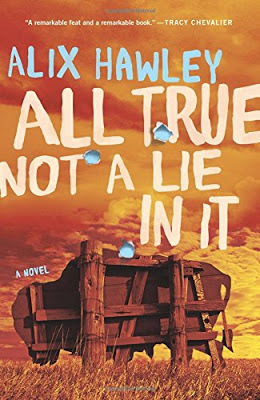 It takes guts to write a biographical novel in first person, present tense. When I attended the Writers Digest Conference a couple of weeks ago, Jordan Rosenfeld, then offering a presentation on points of view, asked me if I’d ever seen historical fiction written that way. Without really thinking, I said no, only to realize that in fact I had just read exactly such a book: Alix Hawley’s brand-new novel about Daniel Boone,
All True Not a Lie in It
.
It takes guts to write a biographical novel in first person, present tense. When I attended the Writers Digest Conference a couple of weeks ago, Jordan Rosenfeld, then offering a presentation on points of view, asked me if I’d ever seen historical fiction written that way. Without really thinking, I said no, only to realize that in fact I had just read exactly such a book: Alix Hawley’s brand-new novel about Daniel Boone,
All True Not a Lie in It
.Yes, Daniel Boone, hero of the early days of the US frontier, star of books, movies, and television. I myself, as a kid in the UK who thought New York was the capital of the United States (because it was the only US city I’d heard of as an elementary-school tyke), knew of Daniel Boone, thanks to the series that ran on the BBC (or ITV, the “commercial” station—I can’t recall). Let’s just say, the series seems to have left out a few of the more interesting bits. That happens when a studio aims at Family Hour.
So what’s so remarkable about using first-person present? For that matter, what is point of view—besides one of those terms that writers casually toss around the way dancers talk about being “up on their leg,” a shorthand that blissfully ignores the reality that if you are not “up on your leg,” the solution is not in your leg but in the core muscles of your torso?
Simply put, point of view (POV) refers to how the information in the story is presented to the reader. These days, a novel is most often related by one character (first-person POV, using “I”) or conveyed through the tightly focused perceptions of a given character (third-person POV, using “he”/“she”). In fiction written before the middle of the twentieth century, the most common POV is omniscient, in which a named or unnamed narrator using he/she skips about from character to character and supplies background information at will. There are variations, such as second-person POV (using “you,” as if a character were talking to herself or telling a story to someone else about himself), and rotating first-person, where a series of characters each tells his/her own story using “I”—these can be hard to pull off. Very common is rotating third-person, where individual scenes or chapters reflect the perceptions of different characters, but never more than one at a time.
Each of these approaches has pluses and minuses, as you might expect—perhaps in a future post I’ll explore them. But each can also be combined with the use of present or past tense (I walk down the street vs. she walked down the street). Some readers detest present tense; others don’t mind it. Past tense dominates most categories of fiction; present tense became more common with the expansion of young adult (YA) literature and has spread into other genres.
Including, it seems, historical fiction. And really, when you think of it, why not? The great advantage of present tense is that it sustains tension. A first-person story in past tense implies that the narrator lived to tell the tale. That’s not a big problem in romance, but in adventure or mystery? Sometimes an author wants to keep readers guessing. A novel, moreover, always takes place in the present, regardless of tense; the author’s job is to recreate the POV character’s experience in the moment, with all the emotions, perceptions, and sensations, the dialogue and actions, that together enrich and impart meaning to a set of events and relationships.
Of course, third-person or second-person stories get around the suspense problem, since someone else must be relating the story, even if that person is not identified. Yet I think the main reason historical novelists avoid the present tense is subconscious: history is “the past,” so we naturally write about it in the past tense. It makes perfect sense until you remember that history exists all around us every day of our lives: we operate in the midst of it, on the ever-moving tipping point between future and past that we call the present. We see the meaning of current events only in retrospect, once we can perceive their consequences and construct a satisfactory chain of cause and effect—not necessarily an accurate explanation, note, but one that coincides enough with our views of how the universe works that we accept it. Just like our characters, we live in the present, experiencing life as it flows by.
So, does it work: the first-person present in a historical novel? I have to say that in Hawley’s case it does. Her Daniel Boone has a freshness and an immediacy that so celebrated a figure sorely needs. He reels from moment to moment, relationship to relationship, crisis to crisis, and celebration to celebration. And in so doing he becomes human again—a boy racing away from tormentors, a young man courting a girl, a new husband, a captive, a hunter.
I don’t know that I’ll imitate her. My characters are not so well known, and the conceit of my Legends series is that these stories have been repeated, expanded, transformed over centuries into something with a core of truth but a good deal of invention. Still, I like to push the boundaries of my craft, and I enjoy seeing something unfamiliar well done. Congratulations to Alix Hawley, not only for trying the unfamiliar but for pulling it off.
Published on August 26, 2016 06:00
August 19, 2016
Talking about Legends
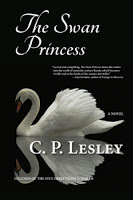 Lots going on the last couple of weeks regarding an essential subject I rarely cover: marketing and publicity. First off, Joan Schweighardt appears in a Web interview with Mayra Calvani of Blogcritics, in which they discuss among other things, Five Directions Press. Mayra also provides a great review of Joan’s
The Last Wife of Attila the Hun
.
Lots going on the last couple of weeks regarding an essential subject I rarely cover: marketing and publicity. First off, Joan Schweighardt appears in a Web interview with Mayra Calvani of Blogcritics, in which they discuss among other things, Five Directions Press. Mayra also provides a great review of Joan’s
The Last Wife of Attila the Hun
.Meanwhile, I was interviewed by Sonya Chung for Bloom, a site devoted to people who publish their first novels after 40 (called Bloomers, which I love!). We talk about the ups and downs of coop publishing and where it fits in the larger, rapidly changing publishing landscape. You can find the interview here. All this was in preparation for a panel at the Writers’ Digest Conference in New York on Saturday, August 13, organized by the wonderful “literary change agent” April Eberhardt. Jordan Rosenfeld also took part. We had a great response and a wonderful time. Many thanks to April for including us and to Sonya for the chance to talk about Five Directions Press.
Last but not least, my interview for New Books in Historical Fiction—conducted by Joan Schweighardt—went live last Friday. After four years, I finally experienced what I put my guests through. I thank Joan profoundly for giving me a chance to talk about my Legends novels at length. All I can say is, I had fun. I hope she did, too.
As usual, the rest of this post comes from New Books in Historical Fiction.
For more than three centuries after the Mongol conquest of 1240, the rulers of the Golden Horde played a major role in Eurasian politics, both directly and indirectly. One of the states most affected was Russia, where the ruling house of Moscow played the postconquest political game so successfully that it made itself the center of the resurgent Russian tsardom. In her Legends of the Five Directions series, C. P. Lesley explores the dramatic potential of that distant and often conflict-ridden world.
The Swan Princess (Five Directions Press, 2016)—third in the Legends series—returns to the story of Nasan, heroine of book 1, The Golden Lynx. Despite her high standing as a Tatar khan’s daughter and two years of marriage to a husband she has learned to love, Nasan has yet to bear a child. As a result, her status within her in-laws’ household is compromised. Her husband has been sent faraway; her snippy sister-in-law seldom misses a chance to score a point; and her mother-in-law, the mainstay of the household, has fallen seriously ill but is nonetheless determined to undertake a pilgrimage to a northern monastery. Nasan has reached her wits’ end when her older brother offers her an out: ride ahead and prepare the family estate for visitors while secretly investigating a renegade member of their family.
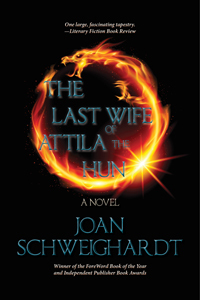 Nasan jumps at the chance to strike out on her own. What she does not know is that her most bitter enemy has escaped from his Arctic prison, and he wants nothing more than to avenge himself on his relatives—starting with Nasan.
Nasan jumps at the chance to strike out on her own. What she does not know is that her most bitter enemy has escaped from his Arctic prison, and he wants nothing more than to avenge himself on his relatives—starting with Nasan.Joan Schweighardt, author of The Last Wife of Attila the Hun and five other novels, conducted this interview. Find out more about her at http://www.joanschweighardt.com.
Published on August 19, 2016 09:03
August 12, 2016
Crime and Punishment
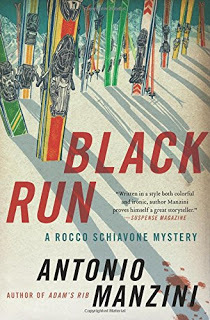 I like a good mystery as much as the next writer. Agatha Christie, Dorothy L. Sayers, Ngaio Marsh, P. D. James, Josephine Tey—but also contemporary writers like Deborah Crombie and Elizabeth George, Gillian Hamer and JJ Marsh—have enlivened many an evening as I puzzled my way through deliberately misleading clues. I tend to prefer cozy to hard-boiled, so when HarperCollins sent me not one but two recently translated mysteries by Antonio Manzini, I wasn’t sure they were going to be my cup of tea. But Black Run and its just-released sequel, Adam’s Rib, are rollicking good reads, with twisty plots and clever solutions and a quite unusual setting. Deputy Police Chief Rocco Schiavone can’t get over his exile from Rome or the tragedy that has left him mourning the death of his wife. Hard-boiled, profane, and smitten with espresso, Camels, liquor, marijuana, and the urge to check out the pretty women who from time to time cross his path, Rocco regards both his current posting and its local police force with a perennially jaundiced eye. Sure, the town of Aosta is high in the Italian Alps, filled with touristy boutiques, ski runs, chalets, and restaurants, but Rocco has no use whatsoever for snow, scenery, or the unfamiliar culture of a small town where everyone he meets is related to everyone else. As for his subordinates, he castigates most of them as morons. Why, they can’t even remember his correct title. Instead, they insist on calling him by the outdated rank of Commissario. Don’t even get him started on their grasp of investigative procedure.
I like a good mystery as much as the next writer. Agatha Christie, Dorothy L. Sayers, Ngaio Marsh, P. D. James, Josephine Tey—but also contemporary writers like Deborah Crombie and Elizabeth George, Gillian Hamer and JJ Marsh—have enlivened many an evening as I puzzled my way through deliberately misleading clues. I tend to prefer cozy to hard-boiled, so when HarperCollins sent me not one but two recently translated mysteries by Antonio Manzini, I wasn’t sure they were going to be my cup of tea. But Black Run and its just-released sequel, Adam’s Rib, are rollicking good reads, with twisty plots and clever solutions and a quite unusual setting. Deputy Police Chief Rocco Schiavone can’t get over his exile from Rome or the tragedy that has left him mourning the death of his wife. Hard-boiled, profane, and smitten with espresso, Camels, liquor, marijuana, and the urge to check out the pretty women who from time to time cross his path, Rocco regards both his current posting and its local police force with a perennially jaundiced eye. Sure, the town of Aosta is high in the Italian Alps, filled with touristy boutiques, ski runs, chalets, and restaurants, but Rocco has no use whatsoever for snow, scenery, or the unfamiliar culture of a small town where everyone he meets is related to everyone else. As for his subordinates, he castigates most of them as morons. Why, they can’t even remember his correct title. Instead, they insist on calling him by the outdated rank of Commissario. Don’t even get him started on their grasp of investigative procedure.

Yet somehow, despite the many obstacles that dot his path, when a lacerated corpse appears on a little-used ski run (Black Run) or a burglary turns out to be cover for a suicide—or is it murder?—(Adam’s Rib), Rocco finds ways to motivate his unsatisfactory officers into finding the information he needs to solve the crime. And each crime turns out to have hidden layers, through which Rocco steadily plods, swearing the whole way about what a pain this all is even as he’s enjoying himself hugely.
Special praise goes to the translator, Antony Shugaar, for a fluid, idiomatic rendition that reads more smoothly than some works written originally in English.
And right now, the e-book version of Black Run is selling for $2.99 (usual price closer to $12.99) on the Kindle and iTunes stores. Not sure how long the sale will last, so if you enjoy complex mysteries and grouchy but likable detectives, this is your chance to discover a new author.
Published on August 12, 2016 06:00
August 5, 2016
New Five Directions Press Release
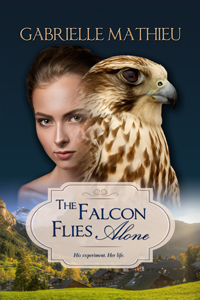 Two days ago, Five Directions Press released its latest title: Gabrielle Mathieu’s
The Falcon Flies Alone
, her debut novel and first in a trilogy about the adventures of Peppa Mueller, the daughter of a Harvard professor whose interest in and talent for chemistry Peppa has inherited. After her father’s untimely death, Peppa winds up in his ancestral home of Basel, Switzerland, under the care of her aunt and uncle—whose priorities in life are, to put it mildly, very different. She runs away. By the time we meet her, she has only a few weeks to wait until she reaches the magic age of twenty, when she will gain access to her father’s fortune. But this is fiction, so fate (or is it design?) soon takes an unexpected turn.
Two days ago, Five Directions Press released its latest title: Gabrielle Mathieu’s
The Falcon Flies Alone
, her debut novel and first in a trilogy about the adventures of Peppa Mueller, the daughter of a Harvard professor whose interest in and talent for chemistry Peppa has inherited. After her father’s untimely death, Peppa winds up in his ancestral home of Basel, Switzerland, under the care of her aunt and uncle—whose priorities in life are, to put it mildly, very different. She runs away. By the time we meet her, she has only a few weeks to wait until she reaches the magic age of twenty, when she will gain access to her father’s fortune. But this is fiction, so fate (or is it design?) soon takes an unexpected turn. Courtney J. Hall outdid herself on the book cover, and the book description and the reviews set the tone. To hear an excerpt or read a preview, stop by our website. And while you’re there, don’t forget to sign up for our quarterly newsletter, which includes the free gift of hand-drawn adult coloring book pages and will place you on the list for our occasional press releases.
The Falcon Flies Alone (FALCON TRILOGY 1)
Gabrielle Mathieu
As the sun rises on a quiet Swiss mountain village in 1957, runaway Peppa Mueller wakes up naked and stranded on the roof of her employer’s manor, with no idea how she got there. As she waits for help, she struggles to piece together fragmented memories of the previous night. Did she really witness the brutal massacre of a local family? Did she kill them? Her fear of sinister house guest Dr. Unruh fuels her panic—as do electrifying flashes of a furious falcon, trapped inside her.
Wanted for murder, Peppa flees the police, intent on finding out if there’s a scientific explanation or if she’s just going mad. Her godfather, world-renowned chemist Dr. Kaufmann, risks his career to help her. In the meantime, Peppa fights her attraction to the handsome priest from India who offers her shelter. With their help, she not only finds Dr. Unruh but places herself at his mercy. His experiments may hold the answer to Peppa’s questions, but the revenge she plans could kill them both.
“Unpredictable, intelligent, and imaginative, this story soars into the unknown. Climb on and enjoy the flight of your life.”—JJ Marsh, author of the Beatrice Stubbs series
“Quirkier than hell on a hot day. It has that unsettling and surreal Twin Peaks feel to it.”
—Editor John Hudspith
“An intriguing blend of science and the occult—it will keep you reading.”
—David E. Nichols, PhD, Distinguished Professor Emeritus,
Purdue University College of Pharmacy
And for those of you who enjoyed last week’s post about Bridgette Alexander’s new YA novel, Southern Gothic, my friend Susan Raab has just become the host of the latest NBN channel, New Books in Children’s Literature. Her first guest is ... Bridgette Alexander! You can hear the interview and subscribe to her free podcast at the New Books Network site.
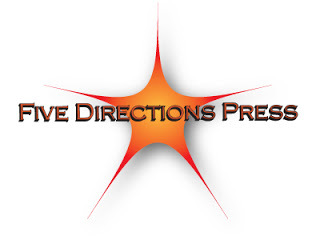
Published on August 05, 2016 06:00



